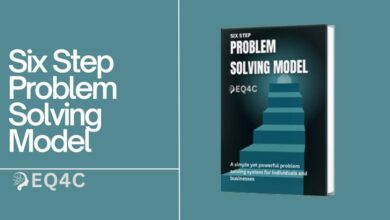Adaptive Structuration Theory
Discover how Adaptive Structuration Theory explains the relationship between technology and organizational change. Learn its impact on modern workplace dynamics and innovation

Over 45 years ago, the Adaption-Innovation (A-I) theory was introduced by Kirton in 1976. It laid the groundwork for Adaptive Structuration Theory (AST)1. This theory is now key in today’s fast-paced, tech-driven business world. It helps organizations deal with new systems and change.
AST shows how technology and organizational structures work together. It helps leaders face the challenges of today’s workplace.
Kirton’s research showed that people have a natural way of solving problems. They prefer more or less structure1. This is important for teams and organizations solving problems.
More adaptive people like structured situations. More innovative people do well in less structured places1. Knowing this can help organizations innovate and change for the better.
Key Takeaways
- Adaptive Structuration Theory (AST) explains the relationship between technology and organizational change.
- AST focuses on how people adapt to new technologies and how these adaptations influence organizational structures.
- Individuals have innate problem-solving styles based on their preferences for more or less structure.
- A range of problem-solving styles within a team can help solve a wider variety of problems.
- Understanding and leveraging individual problem-solving preferences is crucial for fostering innovation and driving organizational change.
The Evolution of Technology-Organization Interaction
As organizations move into the digital world, their setups have changed a lot. Old, strict structures are now being replaced by flexible ones. These new structures help companies keep up with today’s fast-paced business world2.
Traditional Organizational Structures
Before, companies were run in a top-down way, with clear rules and who made decisions. This worked well in the old industrial days, where things were predictable and efficient. But, as things changed faster and customers wanted more, this old structure made it hard for companies to keep up and be creative3.
Digital Transformation Impact
Digital tech has changed how companies work. Cloud computing, big data, and AI have made companies more agile and able to quickly respond to market changes. This shift has led to new, more flexible structures that let employees work together better2.
Modern Implementation Challenges
Even with the good things digital transformation brings, it’s not easy to put new tech and structures in place. Companies face challenges like getting people to accept change, making sure new tech works well, and making sure everyone’s goals and processes match up. The NHS, for example, has been changing to deal with less money, changes in the population, and new health tech4.
Understanding how tech and organizations have evolved helps leaders deal with the digital world’s challenges. It lets them use new, adaptable structures to drive innovation and success2.
Fundamentals of Adaptive Structuration Theory
Adaptive Structuration Theory (AST) helps us see how technology and social structures work together in organizations5. It looks at how people adjust to new tech and how these changes affect the organization’s setup and actions5. At its heart, AST is about the back-and-forth between using technology and the social structures that form and are formed by it.
AST says technology alone doesn’t decide what happens in an organization5. How people use and adapt technology is key in shaping the organization’s structure and behavior5. This means the same tech can lead to different results in different places.
AST also highlights the role of social structures, like rules and relationships, in how technology is used6. These social structures can either help or hinder how people use technology, impacting the organization’s success and performance6.
By grasping AST’s principles, organizations can better handle the mix of technology and social structures6. This knowledge aids in making smart tech choices and adapting to changing tech landscapes, leading to lasting growth.
| Concept | Description |
|---|---|
| Technology Appropriation | The process by which people adapt and integrate technology into their work practices and social interactions. |
| Structuration | The simultaneous creation and recreation of social structures through human action and interaction. |
| Emergent Structures | The new organizational structures that arise from the dynamic interplay between technology and social structures. |
“Adaptive Structuration Theory provides a valuable lens for understanding how the use of advanced information technologies can lead to the emergence of new organizational structures, practices, and capabilities.”
– Gideon Keren, Professor of Management Information Systems
Complex Adaptive Systems in Modern Organizations
Today’s organizations are complex adaptive systems (CAS). They have non-linear dynamics, independent agents, and emergent behaviors7. CAS in organizations have agents that interact and adapt, learning from past experiences8. The NHS is a great example of a CAS, driven by people’s interactions with work and the environment7.
System Characteristics
CAS have unique traits that set them apart from traditional structures8. They have distributed control, co-evolution, and new behaviors emerge continuously8. Complexity theorists like Ladyman et al. [11] see CAS as a mix of interacting elements with organization and memory8. Simon [12] also points out the importance of understanding complexity at different levels8.
Agent Interactions
Agents in a CAS, like individuals or teams, interact in unpredictable ways8. These interactions can create new patterns and behaviors not planned or expected8. Rudall and Wallis [13] have studied these variations, offering a deeper understanding of CAS8.
Emergent Behaviors
The interactions and adaptations in a CAS lead to emergent behaviors not controlled or predictable8. Chan [14] stresses the need to define complexity first, highlighting distributed control and co-evolution8. Holland [15] also outlines CAS traits, including evolution and adaptation to changes8.
As modern organizations become more like CAS, understanding their dynamics is key for management and decision-making9. By using complexity science, leaders can handle the challenges and opportunities of these evolving structures9.
“Complexity is not something that can be simplified, but rather a perspective on the world that accepts and embraces the inherent intricacies and uncertainties of modern organizations.” – John Gell-Mann, Nobel Laureate in Physics
Dynamic Leadership in Adaptive Environments
The world is getting more complex and unpredictable. This makes dynamic leadership more important than ever. Leaders today must adapt to new challenges and opportunities quickly10.
Adaptive leadership is key in today’s world. It helps leaders deal with uncertainty and bring about positive change. Good adaptive leaders are open to change, encourage new ideas, and create a space for learning and trying new things10. They keep their teams stable yet flexible, ready to face any disruption10.
The Complexity Leadership Theory (CLT) is a way to lead in complex situations. It sees leadership as a dynamic process within an organization11. Leaders using CLT understand their complex systems, find ways to change, and use their team’s creativity to solve problems11.
In the healthcare world, like the National Health Service (NHS), adaptive leadership is crucial. The NHS faces fast technology, changing patient needs, and new rules11. By adopting adaptive leadership, NHS leaders can build a culture of quickness, empowerment, and ongoing improvement. This helps their organizations succeed despite tough challenges10.
| Characteristics of Adaptive Leadership | Benefits of Adaptive Leadership |
|---|---|
|
|
By focusing on adaptive leadership, organizations can not only survive but also grow through change10. As change speeds up, the need for leaders who can quickly adapt, innovate, and learn is more urgent than ever for lasting success10.
“Adaptive leaders create the conditions for their teams to respond to changing circumstances with speed and agility.” – John Kotter, Professor Emeritus, Harvard Business School
Social Dynamics and Technology Adoption
Technology in organizations is more than just tools. It’s about the social dynamics that affect its use12. Psychological safety and team culture are key in adopting new tech12. Fears of job loss, distrust in new systems, and poor training can cause resistance12.
Building Trust in Automated Systems
As we use more automated tech, trust in these systems is crucial12. Clear communication and showing reliability are vital12. Security, privacy, and user experience also matter a lot in digital tech adoption12.
Overcoming Resistance to Change
Change resistance is a big hurdle in tech adoption12. Creating an innovative culture and training well can help12. Getting citizen input can also boost tech success12.
Technology’s potential is huge, but it’s how it interacts with people that matters most13. Understanding social and psychological factors helps organizations integrate tech smoothly13.
“The key to successful technology integration is not just the technology itself, but the ability to navigate the complex social dynamics that surround it.”
Barriers to AI Implementation through AST Lens
Adopting artificial intelligence (AI) in organizations faces big challenges. These go beyond just tech issues. Adaptive Structuration Theory (AST) helps us see the social and organizational hurdles that block AI success14.
AI’s power to change things can be a big problem. It can shake up old ways of doing things14. Figuring out how AI affects people is hard, needing a deep look at the AI system14. It’s smart to compare things before and after AI is used to see its effects14.
New tech has made AI better, making data easier to use and more effective14. But, for AI to work well in the public sector, steps need to be taken early on14.
The public sees AI as a way to make decisions better and serve people more efficiently14. But, there are big challenges like bias and privacy issues. These make making rules for AI very hard14.
AI in the public sector faces many challenges. These include changing policies, worried citizens, and not enough knowledge among government workers14. The rules and ways to deal with AI risks are often too abstract or too technical for the public sector14.
A study found big barriers to AI in HR, like not knowing how employees feel, not working well with tech experts, and not caring about AI ethics15.
The study also said there’s not enough research on AI and HR. Experts say we need a better understanding of AI in HR to improve15.
A Pew Research Center survey showed people are mixed about AI. Some are worried, while others are excited16. Opinions on AI fairness vary, with some people more open to it than others16.
By looking at these barriers through AST, we can find ways to overcome them. This helps organizations use AI successfully.
Decision-Making in Complex Adaptive Systems
Effective decision-making in complex adaptive systems (CAS) needs a balance. This balance includes organizational frameworks, human judgment, and automated support17. These systems are non-linear and demand flexible approaches to handle the unpredictable business world18.
Organizational Decision Frameworks
Traditional decision-making models often fail in CAS environments. These systems are more complex than traditional ones. Leaders must use dynamic and collaborative frameworks that understand these systems’ interconnected nature17.
Successful organizations encourage continuous learning and adaptation. They empower their teams to make informed decisions in complex situations.
Role of Human Judgment
Human judgment is key in CAS, even with automated support systems18. Leaders need to balance data-driven insights with their intuition. This balance comes from understanding the system and its stakeholders17.
Effective decision-making in CAS requires quick responses to new challenges. This is best done by combining human expertise with analytical tools.
Automated Decision Support
Artificial intelligence and machine learning have improved automated decision support systems18. But, integrating these tools into CAS needs careful handling. Their success depends on the quality and completeness of the data they use17.
By balancing human judgment with automated decision-making, organizations can improve their decision-making. This balance helps them stay flexible and adaptable in complex systems.
“Success in addressing issues like human trafficking requires long-term thinking and commitment.”17
Creating Effective Leadership Strategies
In today’s fast-changing business world, leaders need to understand complex systems and encourage teamwork and self-organization11. They must create spaces where people can learn and adapt quickly11. This means being able to spot key problems and manage stress to drive positive change11.
Developing these skills is key for managing diversity and driving innovation in a world full of uncertainty11. In today’s fast-paced business, leaders must be adaptable, open, and ready to meet the needs of all stakeholders11.
The Buurtzorg Model in the Netherlands is a great example of adaptive leadership in action19. It lets nurses work together to give personalized care, leading to better patient results and happier nurses19.
By adopting adaptive leadership, companies can build a culture of innovation and learning19. The goal is to empower people to try new things, take risks, and adapt to new challenges19.
“Adaptive leaders must be able to diagnose the system, focus attention on critical issues, and regulate distress to facilitate productive change.”
Future Trends in Adaptive Structuration
As technology advances, the future of work is changing. New technologies and flexible organizational structures are key. Wearable tech and miniaturized sensors are changing health data collection, making medicine more personalized4. AI is also improving business apps, making them smarter and more independent4.
Emerging Technologies
The Theory of Tailorable Technology Design shows that users and developers are both designers. This approach focuses on user needs4. There’s a growing interest in AI design, including explainable AI and assistants that empower users4. A study on AI in healthcare shows its potential in improving health monitoring, offering personalized care4.
Organizational Evolution
Personal information systems are becoming more common, thanks to wearable tech and the Internet of Things4. Wearables extend our abilities, detecting our activities and health without us needing to do anything4. Advances in AI and machine learning are making these devices smarter and more independent4.
Integration Challenges
Organizations face challenges as they adapt to new technologies and social changes. Water management and population growth are uncertain, making planning difficult20. Uncertainty in population growth adds to these challenges20. Water utilities must adapt quickly to manage these issues20.
The future of work will blend new technologies with adaptable organizations. By tackling integration challenges, companies can thrive in the changing work landscape420.
Conclusion
Adaptive Structuration Theory (AST) is key for grasping how technology and organizational structures work together21. With technology changing fast, AST helps businesses adapt quickly. This makes it very important today.
Leaders can use AST to handle the ups and downs of technology-driven transformation22. They can use AST applications to manage change well. This ensures new tech fits smoothly into the organization.
AST will keep being important for businesses to stay ahead in our digital world22. By understanding these complex systems and using dynamic leadership, your business can succeed. It can handle the constant changes and disruptions.
FAQ
What is Adaptive Structuration Theory (AST) and how is it relevant for modern organizations?
Adaptive Structuration Theory (AST) explores how technology changes organizations. It looks at how people adjust to new tech and how these changes shape the organization. AST is key for understanding today’s work environment and innovation, helping leaders manage new tech and change.
How have organizational structures evolved with digital transformation?
Old organizational structures were strict and top-down. Digital changes have made them more flexible and adaptable. Today, challenges include overcoming resistance to change and aligning goals with tech capabilities. The NHS is a great example of an evolving organization adapting to new challenges.
What are the core principles of Adaptive Structuration Theory?
AST focuses on how technology and social aspects in organizations interact. It studies how people adjust to new tech and how these changes affect the organization’s structure. AST explains how technology use and social structures in organizations are connected.
How do complex adaptive systems (CAS) relate to modern organizations?
Today’s organizations are complex adaptive systems (CAS). They have non-linear dynamics, independent agents, and emergent behaviors. The NHS is a CAS, driven by people’s interactions with work processes and the environment.
What role does leadership play in adaptive environments?
In places like the NHS, dynamic leadership is vital. Leaders must be adaptable, changing their approach as needed. Good leaders in complex systems understand the system, foster creativity, and guide agents to success. The Complexity Leadership Theory (CLT) views leadership as a dynamic process influenced by context.
How do social dynamics impact technology adoption in organizations?
Social dynamics are key in adopting new tech. Factors like psychological safety and team culture matter. Resistance to change can come from fear, lack of trust, or poor training. Building trust in automated systems requires clear communication and addressing ethical concerns.
What are the key barriers to AI implementation in organizations?
Barriers to AI include social dynamics, regulations, creative environments, lack of trust, and ethical concerns. AST helps understand these barriers and find ways to overcome them.
How should decision-making processes evolve in complex adaptive systems?
Decision-making in CAS needs to balance frameworks, human judgment, and automated support. It’s important to understand the non-linear nature of CAS. Human judgment is crucial, but automated systems can help. They must be used wisely.
What are effective leadership strategies for complex adaptive systems?
Effective leadership in CAS involves understanding the system, fostering collaboration, and promoting self-organization. Leaders should share a vision and align goals with individual purpose. The Buurtzorg Model shows the power of decentralized leadership in healthcare.
What are the future trends in adaptive structuration?
Future trends include integrating AI and machine learning, evolving structures, and overcoming tech integration challenges. Organizations must adapt to new tech and social changes.




